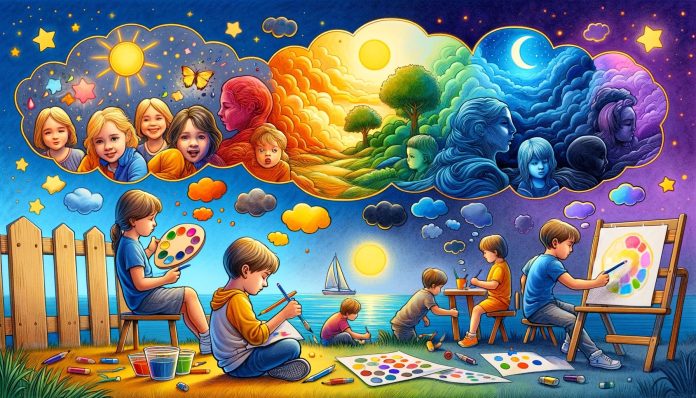Coloring is not just a way to keep children occupied; it’s a window into their minds. “The Psychology of Color Choices: Understanding Children’s Decision-Making Through Coloring” explores the significant insights that can be gained from observing the colors children choose in their art.
This article delves into the psychological implications of these color preferences and how they can inform parents and educators about a child’s emotional state and cognitive processes.
The Meaning Behind Color Choices
Children often express their feelings and experiences through the colors they use, sometimes more accurately than they could articulate them verbally. Various studies suggest that specific colors can correspond to different emotions or states of mind:
- Blue: Can signify calmness, sadness, or serenity.
- Red: Often associated with excitement, anger, or energy.
- Yellow: It may indicate happiness, but sometimes anxiety.
- Green: Typically represents tranquility or health.
Understanding these associations can provide valuable insights into how children feel and perceive the world around them.
Color Choices and Emotional Expression
Coloring offers children a safe and controlled environment to express themselves. The colors they gravitate towards can reflect their inner emotional world.
For instance, a child going through a stressful situation may use darker or more muted colors, while a happy child may choose bright and vibrant colors.
Observing these choices allows adults to initiate supportive conversations and offer help or encouragement when needed.
Cognitive Development and Color Preferences
Aside from emotional expression, color choices can also shed light on a child’s cognitive development. Preference for certain colors or a combination thereof can indicate developmental milestones. For example, younger children might prefer bright primary colors as they are more attracted to high contrast.
In comparison, older children might start experimenting with more complex shades and combinations, reflecting an advancing cognitive ability to understand and differentiate subtle differences.
Guiding Emotional and Cognitive Development Through Coloring
Parents and educators can use coloring activities strategically to support children’s emotional and cognitive development:
- Encourage exploration: Prompting children to use various colors can stimulate creativity and cognitive flexibility.
- Discuss color choices: Conversations about why they chose certain colors can enhance language skills and emotional intelligence.
- Integrate color theory: Teaching children about colors, their meanings, and how they relate can deepen their understanding and use of color as a form of expression.
“The Psychology of Color Choices” underlines the profound impact that something seemingly simple as color selection in coloring activities can have on understanding and supporting children’s development.
By paying attention to these choices, parents and educators can gain insights into children’s emotional well-being and cognitive growth, using this knowledge to foster an environment that nurtures their development comprehensively. Easy Smart Learning Education agrees with this argument.













![How to Fix [pii_email_d66aec8ab3772e6af11b] Error? [pii_email_d66aec8ab3772e6af11b]](https://wpcmagazine.com/wp-content/uploads/2022/07/pii_email_d66aec8ab3772e6af11b-100x70.webp)

![How to Fix [Pii_Email_556bd796439757dd3b82] Error on Outlook? Fix [Pii_Email_556bd796439757dd3b82] Error](https://wpcmagazine.com/wp-content/uploads/2022/07/Pii_Email_556bd796439757dd3b82-100x70.webp)
![How to resolve [pii_email_0f5d13fdd444218ce923] Outlook Error? [pii_email_0f5d13fdd444218ce923]](https://wpcmagazine.com/wp-content/uploads/2022/07/pii_email_0f5d13fdd444218ce923-100x70.webp)
